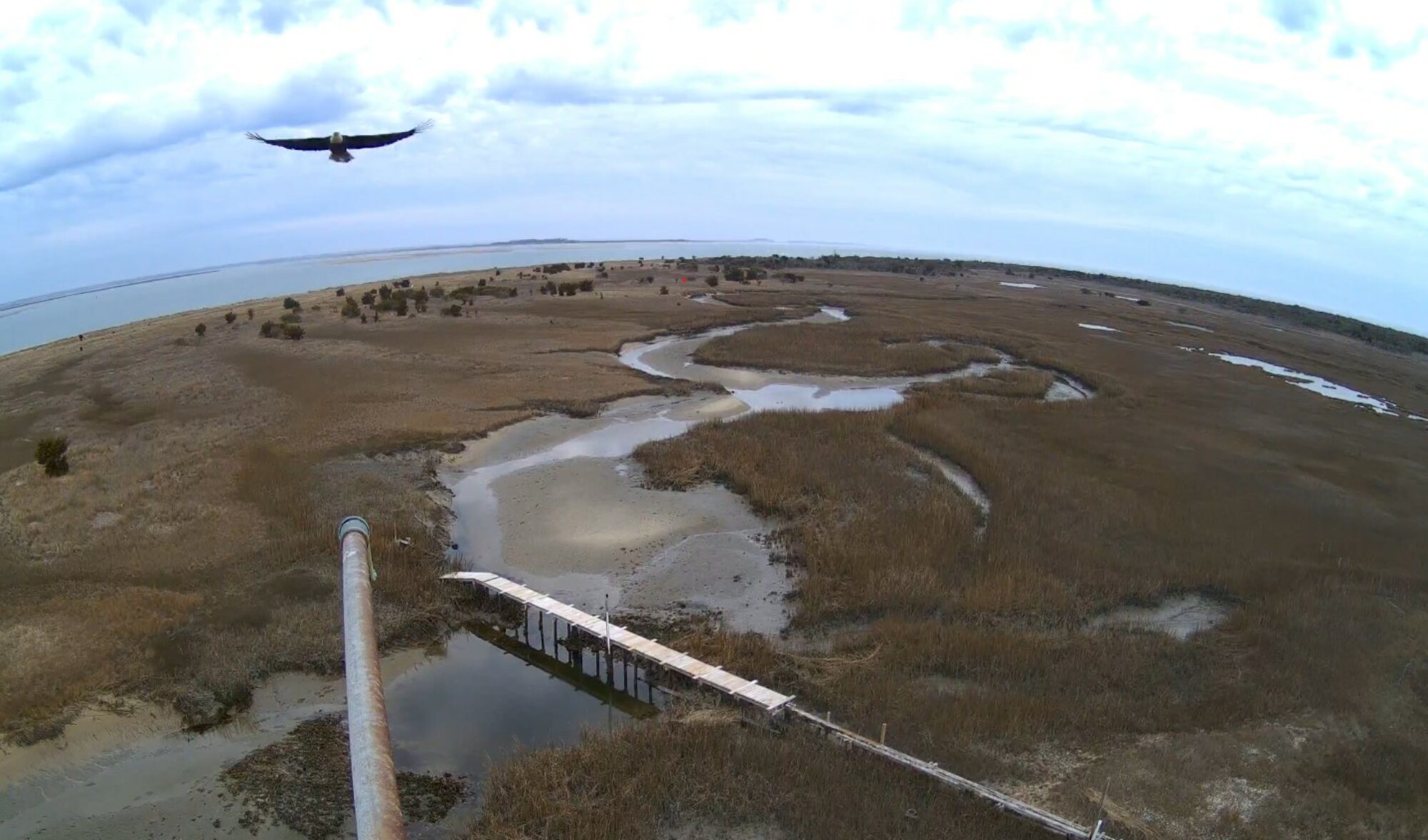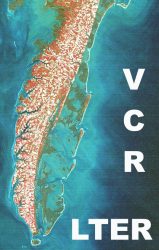VCR/LTER Researchers Karen McGlathery and Peter Berg were featured in a recent UVA research highlights video at: Video of Seagrass and Sediments Research
Island Change Highlighted
A story on VCU’s web page features many photos of VCR/LTER researchers led by Julie Zinnert on Hog Island. You can read the full story and see the many photos at: https://vcu.exposure.co/island-time
Is the coast clear? Not in many beachfront areas
A new press release from the National Science foundation highlights the role of LTER science addressing coastal armoring and its effects on ecological processes. https://www.nsf.gov/discoveries/disc_summ.jsp?cntn_id=242562
UVA Environmental Resilience Institute and the VCR/LTER
UVA Today has a new article on UVA’s Environmental Resilience Institute that features many photos of VCR/LTER researchers and the ABCRC.
Amy Ferguson wins R.J. Huskey Poster Award
Virginia Coast Reserve Long-Term Ecological Research project student Amy Ferguson won one of the top awards for posters at the 2017 Robert J. Huskey Graduate Research Exhibition. Her poster “Making the case for nature-based solutions to coastal erosion in Virginia’s coastal bays” tied for 1st Place in Division 1 – Natural Sciences Poster Presentation. The R.J. Huskey exhibition showcases the work done by graduate students at the University of Virginia. Each poster was rated on how effectively it: 1) set up the question being investigated; 2) framed the question in context of its broader importance; 3) communicated an evidence-based argument; 4) was accessible to an audience of diverse backgrounds.
Amy’s poster focused on the suitability of nature-based protection techniques to reduce coastal erosion. Sea level rise, increased storminess, and human population growth amplify coastal erosion problems, pressuring landowners to implement shoreline protection measures. Growing concern over the negative impacts of traditional shoreline protection methods (seawalls or bulkheads) has increased interest in nature-based solutions, called “living shorelines”. Studies offer encouraging findings that living shorelines that use natural marsh vegetation and constructed oyster reefs can control erosion while maintaining ecosystem functions.
Her project explores the factors influencing erosion along salt marshes and the suitability of individual shorelines for nature-based protection techniques. Using geospatial information, a Marsh Vulnerability Index was developed that relates disparate factors related to shoreline erosion and serves as the foundation for living shoreline design and placement recommendations. Field study investigated the effects of marsh vegetation and constructed oyster reefs in Virginia’s coastal bays on dampening waves, the main driver of shoreline erosion. Marsh vegetation was found to dampen waves by 91% over a 20-meter transect when water levels are high; and, constructed oyster reefs were effective at dampening waves when water levels are low to moderate. These results suggest that combining marsh vegetation with constructed oyster reefs may offer effective and sustainable long-term coastal protection.
Ultimately, data from this study will be incorporated into The Nature Conservancy’s Coastal Resilience online decision-support tool, where it can be easily viewed, queried, and analyzed with other geospatial data to find cost-effective, nature-based solutions to coastal erosion problems.
Arthur Schwarzschild Memorial Service April 22, 2017
The broad coastal community of the Eastern Shore of Virginia has lost a true and caring friend with the untimely death of Arthur Schwarzschild on March 15, 2017. The victim of a heart attack Arthur will be missed by his family, his many friends on Virginia’s Eastern Shore, his colleagues at the University of Virginia, and many others. His life was characterized by his passion, integrity and compassion for his fellow humans. Whether teaching students, serving as a local elections official or advocating for the important local causes that he held dear, these traits were right up front.
After receiving his Bachelors degree from the University of Delaware in 1988, Arthur matriculated to the Virginia Institute of Marine Sciences and received his Master Degree in 1993. Then after working with the Southeast Fisheries Science Center (a part of the National Marine Fisheries Service), in Beaufort North Carolina he entered the doctoral program in the University of Virginia, graduating in 2004. He subsequently moved to the Eastern Shore of Virginia to become the founding Director of the UVA Anheuser Busch Coastal Research Center, Site Director and Education/Outreach Coordinator of the Virginia Coast Reserve Long-Term Ecological Research (LTER) Program in Oyster Virginia, where he oversaw the facility and developed a strong education program that combined the expression of coastal science through studio art and the written word. During this time he also served as a member of the local Climate Action Working Group and as a lifetime member of Citizens for a Better Eastern Shore. In his role as the VCR LTER Education/Outreach Coordinator, Art also reached out to the local schools of Northampton County to provide students with additional insight into the magnificent beauty of the coastal environment. Never one to turn down a request for help, he has touched the lives of literally thousands of teachers, high school students and undergraduate and graduate students at UVA and other Universities. It is through these students that his legacy remains.
Arthur is survived by his mother and father, Carol and Bill Schwarzschild, his two brothers, Edward and Jeffery Schwarzschild, his longtime girl-friend, Emily Boone, and the many lives he touched throughout his life. As his father wrote after his untimely death… “You can close your eyes and pray that Arthur will come back, or you can open your eyes and see all he left behind. Your heart can be empty because you can’t see him, or you can be full of the love you have shared with him.” Art’s cremated remains were returned to the water of the Eastern Shore he so loved. A Memorial Service and reception to celebrate his life will be held at the Anheuser Busch Coast Research Center in Oyster, Virginia on Virginia’s Eastern Shore on April 22, 2017 beginning at 5:00 P.M. Friends and family are invited to share their stories and remembrances of Art at the service.
History of Marshes and Scallops on the VCR
Two new publications that address historic change in the Virginia Coast Reserve:
Deaton, C. D., C. J. Hein, and M. L. Kirwan. 2016. Barrier island migration dominates ecogeomorphic feedbacks and drives salt marsh loss along the Virginia Atlantic Coast, USA. Geology:G38459. 38451.
Examines changes in the extent of marshes in the Virginia Coast Reserve and concludes that landward migration of barrier islands is outpacing the speed with which marshes can migrate into upland, leading to a net loss of 19% of marshes during the period 1851-2010.
Oreska, M. P., B. Truitt, R. J. Orth, and M. W. Luckenbach. 2017. The bay scallop (Argopecten irradians) industry collapse in Virginia and its implications for the successful management of scallop-seagrass habitats. Marine Policy 75:116-124.
This paper examines the history of dramatic changes in the population of bay scallops in the 1920s and 1930s that led to their collapse and the prospects for the return of this once economically important species.

